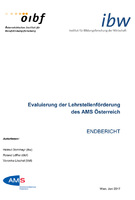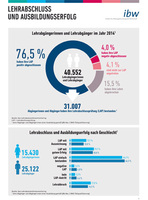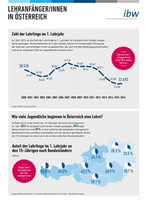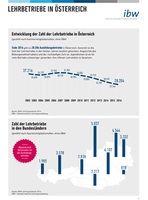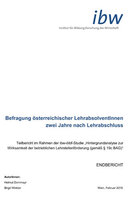Der aktuelle Bericht zur Situation der Jugendbeschäftigung in Österreich, welcher gemäß §15b BAG seitens des BMWFW alle zwei Jahre dem Nationalrat vorzulegen ist, beschreibt die Maßnahmen zur Förderung von Jugendbeschäftigung und Lehrlingsausbildung in Österreich und untersucht deren Umsetzung. Es zeigt sich: Österreich konnte seine EU-weit gute Position im Bereich der Jugendbeschäftigung weitgehend halten, auch wenn zuletzt ein leichter Anstieg der Jugendarbeitslosigkeit zu beobachten ist. Der unübersehbare Erfolg des dualen Systems der Lehrlingsausbildung bei der Vermeidung von Jugendarbeitslosigkeit und der Ermöglichung von früher Arbeitsmarktintegration gerät allerdings durch den (vor allem demografisch bedingten) markanten Rückgang der Zahl an Lehrlingen und Lehrbetrieben sowie der „Konkurrenz“ durch höhere Schulen unter Druck.
Dieser Bericht kann über das BMWFW kostenlos bezogen werden.
E-Mail-Anfragen richten Sie bitte an sabine.traumueller@bmwfw.gv.at
The latest report on the situation of youth employment in Austria, which – according to §15b of the Voca-tional Training Act (BAG) – the Federal Ministry of Science, Research and Economy is obliged to submit to the National Council every two years, describes measures to promote youth employment and appren-ticeship training in Austria and analyses their implementation. It reveals the following picture: Austria has been able to largely maintain its good position throughout the EU in the field of youth employment even if a slight increase in youth unemployment can recently be observed. The evident success of the dual system of apprenticeship training in preventing youth unemployment and facilitating early labour market integration is, however, coming under pressure as a consequence of the marked decline in the number of apprentices (which is mainly due to demographic reasons) and training companies as well as the “competition” with schools leading to the matriculation exam.
